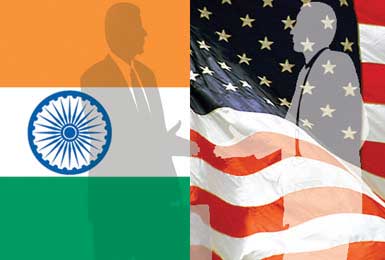Momentum Builds for U.S.-India Trade Agreement
Q3 / Summer 2013

“Yes, we are ready for it. We are in favor of a bilateral investment agreement,” Indian Commerce Minister Anand Sharma told the Press Trust of India news agency. Sharma was speaking at the conclusion of the Washington-leg of his official U.S. tour but gave no time frame for the treaty talks, the news agency reported. “Economic engagement in both trade and investment, though robust, is well below potential, given the opportunities a growing economy like India offers and the opportunities in the large economy of the United States,” Sharma added.
A goal is to raise the share of manufacturing as part of India’s gross domestic product from below 16 percent to at least 25 percent within a decade, and to create 100 million skilled jobs to employ India’s burgeoning young population.
Kerry and Biden Add to Momentum
Adding to the momentum for a trade agreement was the arrival in New Delhi in late June of newly appointed U.S. Secretary of State John F. Kerry. The visit was designed to solidify Kerry’s commitment to what President Obama has called one of the “defining partnerships” of the 21st century, and to keep the growth of trade and foreign policy cooperation on an upward trajectory.
The trip to India was Kerry’s first as Secretary of State, and he headed a high-level delegation that included the new Energy Secretary Dr. Ernest Moniz; Admiral Samuel J. Locklear III, head of the U.S. Pacific Command; and senior Homeland Security, Science and Technology, and International Development officials.
Kerry’s visit was followed by one in late July by Vice President Joe Biden. He’s the first vice president to visit India in three decades. Biden told the Times of India that the world’s two biggest democracies had a “tremendous capability to work together” but should be doing more. He was quoted by the paper as saying, “The United States has welcomed India’s emergence and both nations have profited from it.”
India is expected to become the world’s third-largest economy over the next 10 years, and the United States is eager to solidify workable trade and investment relations. The Obama administration also wants to address concerns in India that the country’s high-tech workers would suffer as a result of immigration bills being discussed in Congress.
U.S.-India Bilateral Trade and Investment
Total bilateral trade between the United States and India is on track to meet $100 billion this year. U.S. goods and services trade with India totaled $86 billion in 2011, and there was a $20 billion trade deficit. Exports totaled $33 billion; imports totaled $53 billion.
India is currently the United States’ 13th-largest goods trading partner with $57.8 billion in total (two ways) goods trade during 2011. Goods exports totaled $21.6 billion; goods imports totaled $36.2 billion.
The top goods export categories in 2011 were precious stones (diamonds and gold), $4.6 billion; machinery, $2.9 billion; mineral fuel (oil), $1.8 billion; electrical machinery, $1.5 billion; and fertilizers, $1.2 billion.
The five largest goods import categories in 2011 were precision stones (diamonds), $8 billion; pharmaceutical products, $3.2 billion; mineral fuel (oil), $3.2 billion; organic chemicals, $2 billion; and woven apparel, $1.9 billion.
In other news, China and the United States recently agreed to re-launch talks on a bilateral investment treaty.
Project Announcements
Revere Plastics Systems Expands Clyde, Ohio Operations
12/23/2025
Japan-Based Imasen Bucyrus Technology Expands Bucyrus, Ohio, Operations
12/23/2025
Swire Coca-Cola, USA Plans Colorado Springs, Colorado, Production Operations
12/22/2025
LS Cable & System Expands Chesapeake, Virginia, Manufacturing Operations
12/22/2025
Anthro Energy Plans Louisville, Kentucky, Manufacturing Operations
12/22/2025
Novartis Expands Durham-Wake County North Carolina, Manufacturing Operations
12/21/2025
Most Read
-
The Workforce Bottleneck in America’s Manufacturing Revival
Q4 2025
-
Rethinking Local Governments Through Consolidation and Choice
Q3 2025
-
Lead with Facts, Land the Deal
Q3 2025
-
Investors Seek Shelter in Food-Focused Real Estate
Q3 2025
-
Tariff Shockwaves Hit the Industrial Sector
Q4 2025
-
America’s Aerospace Reboot
Q3 2025
-
The Permit Puzzle and the Path to Groundbreaking
Q3 2025

